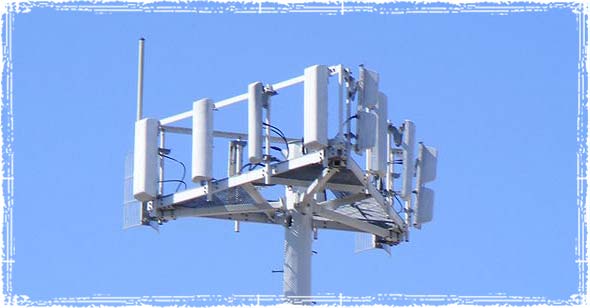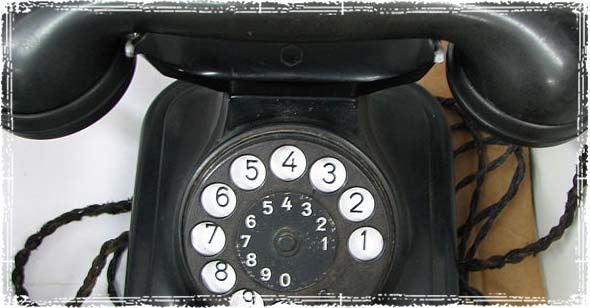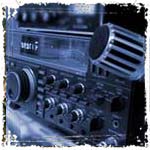In terms of preparedness, emergency communications should be at the top of your list. In times of crisis, the ability to send and receive information could mean the difference between life and death.

As part of our infrastructure series, we are going to take a look at our country’s communications infrastructure.
Who is Listening?
Let’s face it; every time we talk or transmit messages through our modern communications infrastructure, we put ourselves at risk. From bored teenage hackers, to more sophisticated criminal groups, hundreds of thousands of hackers are hard at work trying to steal every piece of data they can get their hands on.
If you use one of these modern forms of communication, (cell phones, the internet, email, etc…) there’s a good chance that your information will eventually become compromised.
The technology is out there, and it’s getting easier for criminals to use it.
 At a security conference a couple of years back, a group of hackers showed how easily they could intercept just about anyone’s cell phone conversations.
At a security conference a couple of years back, a group of hackers showed how easily they could intercept just about anyone’s cell phone conversations.
With under $1,500 worth of gear, the security expert built a device that mimicked a cell phone tower. The device tricked cell phones into routing their outbound calls through the device, allowing the hacker to intercept even encrypted calls in the clear.
During the demonstration, the security expert was able to get 30 phones from people in the audience, to actually connect to his simulated tower.
Government is tracking it all…
Based on recent events, we can now say with absolute certainty that our communication channels are anything but secure. It’s very likely that everything you say, or send, is in some way being monitored or fed into a massive government database.
What was once considered the paranoid thoughts of conspiracy theorists has now been confirmed: The government is monitoring everything.
During a Disaster, Can you really count on modern forms of Communication?

Time and time again, we see just how vulnerable we are to even small-scale disasters. From cell towers being taken offline by relatively small storms, to cell networks becoming completely overwhelmed during national tragedies, it’s pretty obvious our systems are not built to deal with emergencies.
Most Americans have become way too reliant on their cell phones, and many don’t realize how ineffective they will likely be during a disaster. In fact, during the summer of 2012 a series of storms swept through the mid-Atlantic region of the U.S. causing widespread damage to the cellular infrastructure.
During these disasters, millions of people were unable to use their cellphones, access the internet, or even dial 911. The problem was so bad that parts of Northern Virginia went without emergency 911 services for over 48 hours.
If our cell providers can’t even guarantee service during normal yearly storms, what do you think will happen during a major nationwide disaster?
You have to have a backup plan
During any type of emergency, communications is usually one of the most important survival skills that you can possess. When modern communication lines go down, you need to have a plan of action in place. For more information, read our article on emergency communication planning for disasters.
Large Scale Threats to the System:
Now that we have natural disasters covered, the next step is to prepare for large-scale threats.
Cyber Threat: The cyber threat is real, and it’s so much larger than them just listening to our calls.
Our modern communication infrastructure is incredibly reliant on the grid; this reliance has made us incredibly vulnerable to attacks. Earlier this year, hackers launched one of the largest DDOS attacks in the history of the internet
The attack caused widespread internet congestion, and jammed critical infrastructure around the world. The attack showed how quickly, and easily, hackers could cripple our communication systems.
In a matter of hours, a large-scale coordinated attack could literally cripple the country.
EMP Threat: Just like our electrical grid, our communications infrastructure is incredibly vulnerable to electromagnetic pulse (EMP) attacks.
Recently, after North Korea threatened the U.S. with a nuclear attack, the threat on an EMP being detonated over our skies has become even more of a concern. If North Korea, or any other rogue nation, were able to detonate an EMP it would change our country in an instant.
Our entire power grid would instantly go down, making every form of modern communication completely useless in a matter of seconds. Our cell towers, radios, telephones and internet systems would all stop working.
In the blink of an eye, the way we communicate and gather information would instantly change.
Contingency Planning:
When the power lines go down, and modern communication becomes completely unreliable, there is one form of commutation that will probably still be alive and well – Ham Radio.
Although there are many people who are leery of becoming a licensed Amateur Radio operator – and I really don’t blame them after all the recent government spy scandals – I do believe the benefits outweigh the risks. I mean let’s face it; they probably have more information on those that use cell phones, than those who become licensed Hams
Why Ham Radio?
 Ham Radio in probably one of the most viable forms of communication during any crisis situation. During the initial stages of a disaster, Ham Radio operators are often the only line of communication into or out of the affected area.
Ham Radio in probably one of the most viable forms of communication during any crisis situation. During the initial stages of a disaster, Ham Radio operators are often the only line of communication into or out of the affected area.
If you’re serious about emergency communications, I advise reading one of our many articles on Ham Radio.
In a survival situation, knowledge is going to be a critical factor in determining the outcome of your situation. Don’t underestimate the power of communication, and the importance of staying informed.



to Mandarin, that is why they make you get certfied, but ion the regular CB it’s a bit harder to track you down
Trrrust me (as the Terminator would say), if the government wants to track (find) you bad enough, it won’t matter what you’re using. CBs can be tracked just like any other type of radio transmision. The main reason the gov’t doesn’t bother to do it more often is purely cost. There are so many CBers that it’s just not cost efficient to spend the time and money to track every QRP clown who cusses over an open mike or acts like a jerk on the air. But, make no mistake: if you’re using your CB in a manner that attracts enough negative attention long enough, for something really egregious (like, say, continually interfering with other users of the airwaves, or stirring up anti-government riots etc., etc.), they will find you, and quicker than you might imagine. And, the penalties could be stiff.
haha, more like Sauron to say that than Gandalf.
But you didn’t answer. Yes they can monitor and locate you just not as easy the FCC listens to ham radio broadcasts still. Not to mention triangulation is a technic used since ww2
Every ‘licensed’ amateur “HAM” radio operator has a license issued by the FCC, and you can see their registered address simply by looking up their call-sign. That is the address where their license was sent to and does not mean that is exactly where they are located if they are using a mobile unit, but a general location.
Then there is the use of Directional Finding (DF) equipment which can be used in triangulation, just like cell phones without GPS chips can be triangulated from the signal strength between different cell towers.
I am prepared to buy a ham radio and system, but live in the mountains, and there are so many brands and marketing schemes. Specifically what system would be above average in terms of long range communications? .
You really should consider at least studying for your ham ticket. You will learn great deal just doing the studying. The type of radio you should get depends a great deal on what you want to do with it. UHF/VHF are good for local, line on sight type work, which may not work well for you in the mountains, unless you setup a repeater. Most of the little FRS type radios are only good for about 1/4 mile if that depending on terrain. An HF ham radio can be good for 100s to 1000s of miles depending on a number of factors. The issue with long range communications in the ham world is propagation (how the signal skips off the Ionosphere). So you may be able to talk to someone 1000 miles away, you may not be able to get someone 200 miles away with the same system. Most major brands are good to great. The antenna system has as much if not more to do with who you can reach than the radio does.
If you have not bought any communication equipment look into marine radio,,they use differant frequency and water proof to the max, base units and handheld,, with everyone else using standard cb channels you will have less interferense,,,,so i have been told.
Unlike CB, however, your marine radios must be licensed. Otherwise, you risk a visit from the FCC (usually accompanied my a member(s)) of the local constabulary.
Depending on what freq you are using Ham radio can be very difficult if not impossible to locate. CB, UHF and VHF are line of sight only (in most cases), so tracking those is pretty simple. As far at the FCC call sign goes, you can simply get a P.O. box rather than your home address. Or if things go really sideways, just don’t use the call sign.
Again: Be carefull, here. Your Ham station must be licensed. You still have to give the FCC one of two things; either the street address of your primary station, or if no street address (e.g. you live at some exotic, off-grid location, you may be asked to supply the lattitude and longitude coordinates of your primary station). The FCC excercises considerably more oversight of Amateur (Ham) radio stations than it does CB, for example. As previous posters have hinted, best to get your Ham ticket and learn what really goes on. Try http://www.arrl.com, the website for the American Radio Relay League, America’s longest-lived Ham Radio organization. They have some really good materials and advice on getting licensed and doing things the right way, so that you stay on the right side of the law…at least while there still is law.
Hmmm. That’s interesting as I understand it, the control operator is licensed. Not the radio itself. When I got my ticket, they asked for a mailing address. I gave them a P.O. box. No one even batted an eye. That being said, the FCC can request to inspect your gear, and you have to respond and comply or they can fine you and pull your ticket or both.
From my limited research, the need for the actual location of your gear is no longer required just a mailing address.
Probably too late for the party here, but… Hey LongGone, you mentioned how difficult it is to track HF. Any thoughts on how long before the gov’t will be able to pinpoint a transmitter using satellites?
I really don’t know how possible that would be, because HF signals can have various take off angles. Depending on the type of antenna you are using the angle can very a great degree. A satellite in orbit by it’s very nature is above the atmosphere. So even if the satellite got the signal it could be bent or could have even skipped by the time the satellite picked it up.
Wizard – I gave your question some more thought over the weekend and after doing some checking it may in fact be possible to track a HF signal via satellite. But being possible is different than it actually happening. Here is what made me change my mind (for what it’s worth).
Satellites orbit from ~100 miles to > 22,300 miles. The low earth orbit (LEO) satellites operate below and in the ionosphere. HF signals can bounce off the ionosphere so that would put those signals within range of a LEO satellite. This issue with LEO satellites is that they have to really be moving, about 17,000 mph. Because they are close to the ground, they have a very limited view of the earth, for a very short time. The higher the satellite the larger and longer the field of view. The issue with higher orbiting satellites is that even a 1/2 degree error in tracking makes the search area much larger.
For example if a satellite is orbiting at 17,000 miles and the detection error is 1/2 degree, the area on the ground for the govt to search would be a circular area about 148 miles.
So while it may be possible to track you from a satellite, it wouldn’t be practical. The geostationary satellites, tend to be in high earth orbit (HEO) so the tracking would have to be spot on to find you even if they could detect a signal without any skip. Those satellites that are not geostationary would have to be in a location where they could detect a signal again without a skip, while you were transmitting.
Sorry about the book….
OBTW……..the $1500 worth of gear to re-route cell phone calls is now available for around $150.
Something everyone seems to forget is the damage the shutdown itself of the power grid through EMP would create. The total loss of the ability of the power plant to operate also means the nuclear plants would lose their ability to reinsert the nuclear fuel rods into their shut down positions. I.E. the rods would be exposed and continue heating up through the fission process without the ability to cool… China Syndrome, T.M.I., Chernobyl, Fucashima; whatever you want to use as the example, the meltdown would release much hazardous radioactivity into the upper atmosphere as well as the ground water table.
A full scale EMP attack in several regional areas at once would create such a total catastrophe no area of this country would be safe from its effects.